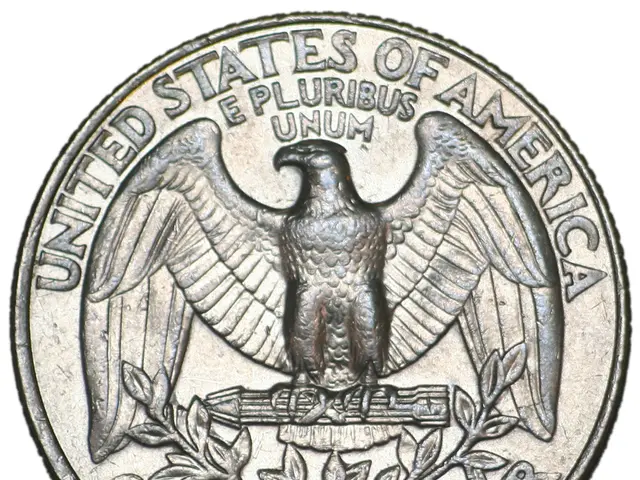U.S. alleges fresh tariffs against India due to commercial agreements with Russia
In a move aimed at deterring support for the Russian economy amid its ongoing aggression against Ukraine, the United States government, under President Donald J. Trump, has imposed a 25% tariff on India's imports [1][2]. This tariff is part of a broader sanctions and trade restriction framework based on the International Economic Emergency Powers Act (IEEPA).
The tariff, effective from August 27, 2025, follows an earlier 25% duty effective August 7, 2025, bringing the total tariff on covered Indian goods to 50% [1][3]. This action was taken in response to India's continued purchase of Russian oil, with oil accounting for 80 percent or 3.6 billion euros of India's purchases from Russia [5]. In June 2024, India was the second-largest buyer of Russian fossil fuels, with purchases worth 4.5 billion euros [6].
The U.S. government views India's oil imports from Russia as indirectly supporting the Russian government's actions, necessitating economic countermeasures to reinforce sanctions. The tariff is meant to discourage India and potentially other countries from continuing such imports, which the U.S. frames as exacerbating the national emergency caused by Russia’s aggression in Ukraine [2].
This move could strain US-India trade relations, as the high tariff (up to 50%) on Indian goods could reduce Indian exports to the U.S., affecting trade volumes and cooperation. It may also push India to seek alternative trade partnerships or diversify its suppliers, especially if India chooses to prioritize energy security via Russian oil despite U.S. pressure [1][3].
The tariffs reflect a clash of strategic interests: the U.S. prioritizes sanction enforcement against Russia, while India balances its energy needs and geopolitical considerations. This could lead to a strain in US-India relations, complicating cooperation beyond trade, unless diplomatic efforts resolve these differences.
Russian commentators stated that negotiations between Trump's US special envoy Steve Witkoff and Moscow had not led to any results [7]. It was already considered extremely unlikely that Putin would agree to Trump's demand for an end to the war [8].
The tariffs are part of a broader tariff package against dozens of other countries [9]. In 2024, India was one of the most important trading partners of the USA, with pharmaceuticals being mainly imported from India to the USA [10]. Among the most exported goods from the United States to India were oil and gas [11].
The exact long-term impact on bilateral relations remains unfolding, as no detailed search results explicitly state India’s or the U.S. government’s official diplomatic response to this tariff escalation.
References:
- Tariff Tracker: US Imposes 25% Duty on Indian Oil Imports
- US imposes 25% tariff on Indian oil imports in bid to deter Russia support
- US imposes 50% tariff on Indian oil imports in bid to deter Russia support
- Trump Sets Deadline for Russia-Ukraine Ceasefire
- Oil Accounts for Majority of India's Russian Imports
- India Becomes Second-Largest Buyer of Russian Fossil Fuels
- Witkoff-Moscow Talks Yield No Results
- Putin Unlikely to Agree to Trump's Demand for War End
- US Announces Tariffs on Dozens of Countries
- India-US Trade: Pharmaceuticals Lead the Way
- US Exports to India Mainly Oil and Gas
- The tariff imposed by the United States government on India's oil imports is part of a larger tariff package aimed at various countries, emphasizing the U.S.'s focus on policy and legislation related to finance, industry, energy, and oil-and-gas sectors, as well as war and conflicts.
- The U.S. is using this tariff as a means to discourage India and potentially other countries from indirectly supporting Russia's actions in Ukraine by purchasing Russian oil, which represents a significant portion of India's overall purchases from Russia.
- The high tariff (up to 50%) on Indian goods could have implications on the general news front, potentially straining US-India trade relations, altering trade volumes and cooperation, and pushing India to seek alternative trade partnerships.
- The imposition of tariffs and the resulting strategic interests clash could complicate matters beyond trade, potentially causing a strain in US-India relations, and necessitating diplomatic efforts to resolve these differences in the political arena.






